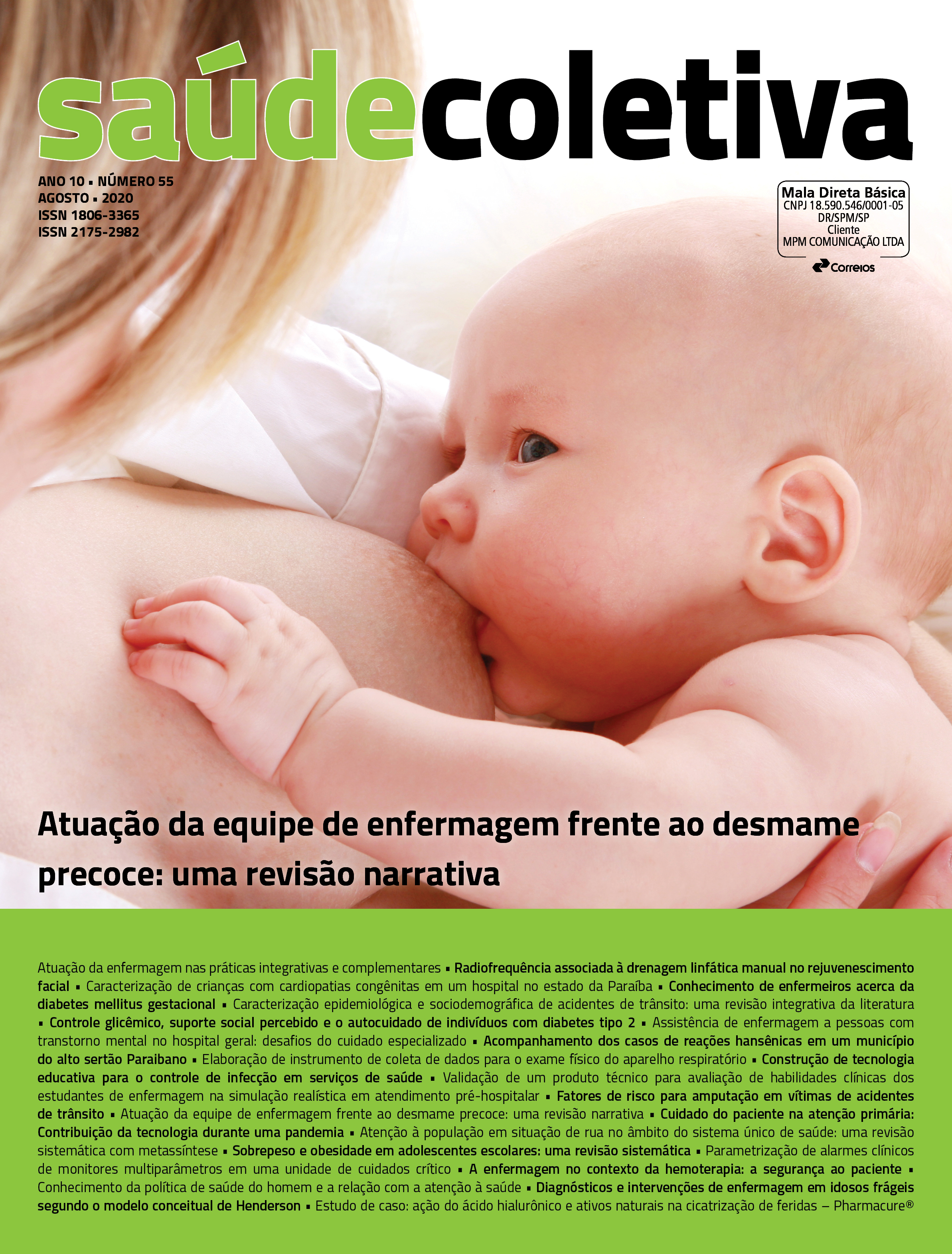Parameterization of clinical alarms of multiparameter monitors in a critical care unit
DOI:
https://doi.org/10.36489/saudecoletiva.2020v10i55p2959-2972Keywords:
Clinical Alarms, Critical Care, Monitoring, Patient safety, NursingAbstract
Objectives: To identify and classify the audible alarms of hemodynamic variables triggered by the multiparameter monitor, before and after the intervention of parameterization of the limit values of the alarms. Method: Quantitative approach, quasi-experimental design, evaluation study before and after, data collection technique, non-participant observation in an intensive care unit, for 60 h. The study participants were nursing professionals. Data production was divided into two moments: 1st moment of patient characterization and 2nd moment of alarm description (pre and post parameterization phase). Data analysis with calculation of the odds ratio (OR). Results: During the pre and post phases, 87 patients were counted and 42 (48%) had at least one alarm turned off. In the pre-phase, 513 alarms were registered, 428 (83.4%) were inconsistent, 497 (124 fatigued alarms and 373 missed) were not attended by the nursing staff. In the post phase, 438 alarms were recorded, 330 (75.3%) were inconsistent, 423 (90 fatigued alarms and 333 missed) were not answered. The OR for fatigued alarms and consistent alarms is 1.2 for the first event and 0.5 for the second. Conclusions: First step to map alarm fatigue, as well as equipment usability. Mapping that will subsidize the team's subsequent training, adoption of a protocol and routine regarding parameterization and usability, which will help in the correct clinical reasoning in the professionals' decision making, and will favor to the patient's surveillance and consequently their safety.







